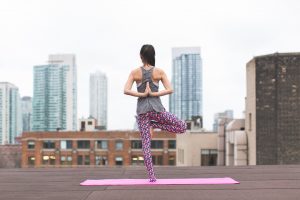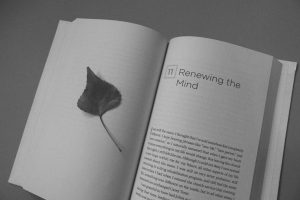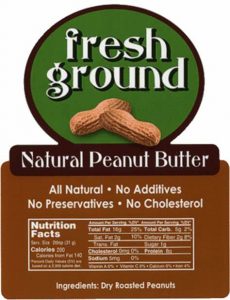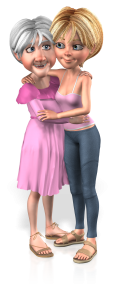According to a recent Gallup poll, Americans are among the most stressed people in the world. That’s why we need to turn well-being into a way of life. It’s a puzzle with physical, mental, and emotional-spiritual components.
Everyone has a different well-being puzzle. And it may need to change over time. What works when you are twenty-something may be different from when you are eighty-something.
I am a “plenty-something” woman—old enough to know I’m not as smart as I used to think I was, but young enough to do something about it. I was late figuring this out. But now I am infusing well-being into the core of my life. Here’s how.
Integrated exercise framework
My exercise framework is a mix of cardio, strength, and flexibility each week.
When I’m at the gym, I prefer taking classes rather than working on equipment. The time is set, a room full of people provides energy, the trainers encourage effort, and the music spurs movement. My preferred cardio is a mixed-martial-arts class called Body Combat. It’s my weekly high-intensity heart pumper.
To build muscle and bone strength, I take a weight-lifting class. Again, it’s a set time with people and music surrounding me. Using barbells with different weights, I can focus on each of the muscle groups—lighter for triceps and biceps, heavier for squats.

Yoga provides the flexibility training. For most of my life, I thought yoga was not demanding enough, and more “out there” than would fit me. I was wrong. In the few years since I started yoga, my balance, my mental outlook, and my flexibility have all improved. Connecting movement with breathing has also helped my focus and energy. I am a convert.
When I don’t go to the gym, I replace classes with other exercises—hiking, walking, biking, landscaping, lawn mowing, snow shoveling. My Fit Bit keeps pushing me out of my normally sedentary job. While there is no magic number of steps, I’ve set a personal goal and I stick to it.
It’s a challenge to fit exercise into an already busy schedule. But it can be built into daily routines. Take the steps instead of the elevator (at least for a few floors). Park farther away in the lot. Keep hand weights by your desks. Do impromptu wall pushups when you take a break. Take opportunities to stretch whenever you can.
Exercise is my own secret weapon. It helps with stress, sleep, weight management, and health.
Nonstop learning

Expanding knowledge should be everyone’s goal. We are never done learning. But with all the technology around us, it becomes too easy to lapse into the passivity of pleasure-seeking experiences. With some effort, I try to use technology to engage my brain in a more educational direction.
There are many benefits to maintaining an active brain.
- Research has shown that a challenged, stimulated brain may lead to more vibrancy later in life.
- Continued learning helps a person adapt to change.
- Upgrading your knowledge helps with career advancement or transitions.
- Lifelong learning has been linked with health and well-being.
- You’ll be more interesting and charismatic.
Think about ways you can activate your brain. Acquire a new skill (how to play guitar, perhaps). Take an online course (Coursera might be a start). Tinker. Travel. Just don’t stop learning.
“A human being should be able to change a diaper, plan an invasion, butcher a hog, conn a ship, design a building, write a sonnet, balance accounts, build a wall, set a bone, comfort the dying, take orders, give orders, cooperate, act alone, solve equations, analyze a new problem, pitch manure, program a computer, cook a tasty meal, fight efficiently, die gallantly.” – Robert Heinlein
Authentic food
I admit I don’t follow any particular diet. Nevertheless, I’m conscious of what I consume. I just plain feel better when I eat right. Fruits and vegetables are important staples—especially if they are organic or natural. But I don’t stop there.

I do my best to minimize processed foods and chemical preservatives. I look for labels with very few ingredients. In particular, I avoid:
- artificial sweeteners
- high-fructose corn syrup
- monosodium glutamate (MSG)
- sodium benzoate
- sodium nitrite/nitrate
- sulfites
- trans fat
I also limit the amount of sugar, gluten, red meat, and dairy products (and wine and beer!) in my diet. Moderation is my forever motto. Yes, I realize Warren Buffet and others thrive on Coke and fast food, but that doesn’t work for me.
Lead a purposeful life
Everyone needs a purpose in life—the reason you get up in the morning. Living your life on purpose is a strong component of well-being.
And it doesn’t have to be big and impressive.

The lives of my family and extended family are integral to much of what I do. In fact, I changed my career to help my mother through her dementia during the last four years of her life. I have volunteered for several non-profits. And I am one of the 40% or so of the American population who attend church. My life purpose continues to evolve, but it always involves human connections.
Sometimes I think about what my legacy will be. I’ll never know, but I am creating it by living my life on purpose.
“The two most important days in your life are the day you are born and the day you find out why.” – Mark Twain
Everyday mindfulness
Yoga and meditation have been key elements in my search for mind-body connections. Being mindful has been a gradual learning process. But with some practice, it’s now possible for me to take the present awareness and breathing techniques into my everyday life. I believe you can, too.
Unless stress is managed, it accumulates over time and turns into burnout. By tuning into the present moments through mindfulness, you can begin to recognize your stress signals and triggers, and learn to proactively moderate them.
When faced with a stressful situation, inhale deeply through your nose and exhale through your mouth. As you exhale, focus on a word or phrase that will shift your mind from the negative to a positive. Words such as calm, relax, or peace can work. If possible, close your eyes and imagine yourself in a peaceful setting. Give yourself time before responding to the stressful incident.

Rest and Relaxation
This has occasionally been a bit of a challenge for me. I am a Type-A personality. My husband complains that I never stop moving—I even “twitch” in my sleep. I sometimes have to “work” at not working. And because of that, I always find myself multitasking.

But my logical brain knows how important it is to unplug.
Socializing with friends is a must. It generates laughter and a feeling of belonging. Research demonstrates a link between social connections and health.
Camping and hiking trips are both back-to-nature and physical-activity escapes. In the past I focused mostly on the Type-A physical fitness aspect. But now I approach these activities more mindfully.
Balance Your Priorities
As I was writing this, I realized I sometimes struggle in all these areas. I can’t do everything all the time. I’ve learned to set limits for myself. (Or at least I’m working in that direction.) Sometimes I need to declutter my life. That includes reducing “stuff,” but also what I put on my calendar. I have to say “no” occasionally to be able to say “yes” to my health and well-being. What I don’t do can be as important was what I DO do.
Final thoughts
My mother lived to 102, after surviving three types of cancer. She took no prescription medications and lived quite independently before succumbing to dementia. She might be from a good gene pool, but I also believe the way she lived contributed to her longevity. From her I learned the importance of several well-being techniques, which I augmented with new data over time. The result is the list of topics in this post:
- Cardio, strength, and flexibility exercise each week
- Healthy foods with minimal processing and chemical preservatives
- The pursuit of lifelong learning
- Living my life on purpose through social and spiritual connections
- Being mindful of the present to avoid stressful overload
- Allowing time for sleep and relaxation
- Setting and resetting priorities to ensure an ongoing balance of well-being
I’ve had—and will continue to have—rough patches in life. But I’ve learned there are no silver bullets, no shortcuts. Well-being includes physical, mental, emotional and spiritual components. It’s an attitude. It’s a way of life.
